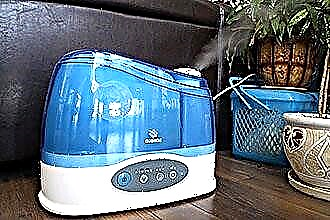A runny nose occurs due to the development of an inflammatory process localized on the nasal mucosa. Often this symptom is a protective reaction of the body. However, for many parents, a runny nose in a child is a contraindication to walking. According to experts, it is very difficult to give an unambiguous answer to the question of whether it is possible to walk with a child with a cold, because it depends on a number of factors: the causes of rhinitis, accompanying symptoms, the child's age, weather conditions, etc.
Indications
 The nose performs a protective function, being the main obstacle to the penetration of various infections and dust into the body. When an excessive amount of harmful substances accumulates in the nasal cavity, the body activates the protective properties, as a result of which a runny nose may appear. Also in the nose, the air is warmed up in the cold season.
The nose performs a protective function, being the main obstacle to the penetration of various infections and dust into the body. When an excessive amount of harmful substances accumulates in the nasal cavity, the body activates the protective properties, as a result of which a runny nose may appear. Also in the nose, the air is warmed up in the cold season.
When going outside, the following happens:
- moisturizing the nasopharyngeal mucosa, making breathing easier;
- strengthening the protective functions of the child's body, hardening due to small temperature changes;
- improvement of blood circulation, removal of toxins and harmful microorganisms under the influence of fresh air.
Determining factors
In order to decide whether to walk with a child with a cold, it is necessary to carefully evaluate the factors accompanying the disease.
Rhinitis causes
It is important to understand that if a runny nose is one of the symptoms of a severe bacterial infection (sore throat, pneumonia, sinusitis) or an allergic reaction is the cause of rhinitis, then walking will be contraindicated. Most often, allergic rhinitis manifests itself in spring and summer, during the period of active flowering.
Associated symptoms
General health is one of the main factors in deciding whether it is possible to walk with a cold. Indeed, in the case when nasal discharge is accompanied by high fever, weakness, dizziness, drowsiness, whims, headache, it is better to refuse to go outside. In this case, it is better to wait a little and postpone walks until the patient recovers.
Important! If the general state of health does not allow a child with a runny nose to go outside, it is necessary to provide favorable conditions in the room where he is (often ventilate the room, regularly carry out wet cleaning).
Many experts, including the well-known pediatrician Komarovsky, agree that a runny nose, accompanied by a slight increase in temperature and even a cough, is not a contraindication to walking. Since during being outdoors, natural ventilation of the lungs occurs, as well as liquefaction of viscous secretions, the release of sputum is facilitated.
Important! An increase in productive cough during a walk is a positive trend, helping the child to get rid of the viscous secretion that has accumulated in the nasopharynx and bronchi.
Features of the walk
If it was decided that the child can walk, then it is worth giving preference to quiet games, walking away from busy highways and hazardous industries, so as not to strain the weakened body once again. It is better to organize everything in such a way that the child spends the available energy on the confrontation with viruses and bacteria.
If you go outside during the warm season, then with a cold, the duration of the walk should not exceed forty to sixty minutes, provided there is no strong wind. In the cold season, it is better to reduce the duration of stay in the fresh air to fifteen to twenty minutes. In windy and rainy weather, it is best to limit your walks.
Weather
The greatest danger for a weakened child's body is walking during the cold season in the autumn-winter period and in spring, since there is a risk of hypothermia.  However, if the child is dressed for the weather, and the risk of getting his feet wet and freezing is minimized, then inhaling cool, moist air will have a beneficial effect on the condition of the nasopharynx. Contraindication in this case is severe frost (minus 10-15 degrees), strong wind, snowfalls, showers.
However, if the child is dressed for the weather, and the risk of getting his feet wet and freezing is minimized, then inhaling cool, moist air will have a beneficial effect on the condition of the nasopharynx. Contraindication in this case is severe frost (minus 10-15 degrees), strong wind, snowfalls, showers.
Too hot summer weather can also negatively affect the patient's condition. Especially in situations where a runny nose is accompanied by a fever. When the air temperature is above thirty degrees, the child should be in the shade while walking. In conditions of low humidity, it is necessary to periodically irrigate the child's nasal passages with special saline solutions, in order to avoid drying out of the nasal mucosa.
The optimal conditions for walking are temperatures ranging from minus five to plus twenty five degrees and average humidity.
Age
Regardless of age, both a baby and an older child need fresh air even if there is a runny nose. Moreover, the less the patient is, the more benefit he will receive from going out. Since fresh air is the key to the full development of a child, it has a beneficial effect not only on the condition of the nasopharynx organs, but also allows you to strengthen the body by gradual hardening.
Treatment features
If the child is prescribed physiotherapy procedures in the form of inhalations, warming compresses, etc., then you need to go outside no earlier than half an hour or an hour after the treatment. It is better to go outside in the interval between taking medications, if any, or take them with you.
Important! It is worth canceling walks if the child is assigned constant instillation and rinsing of the nasal passages.
Contraindications
In order for the walks to be not only harmless, but also beneficial, and also not harm others, parents need to know some features when going out with a child with a cold.
- Do not allow a sick child to be in close contact with other children on playgrounds so as not to infect others. This rule is especially relevant in the warm season, while in frosty weather the likelihood of transmission of infection is minimized.
- You can't go out with a stuffy nose. Before walking, it is necessary to thoroughly cleanse the nasal passages and ensure full breathing through the nose, in order to exclude inhalation of air through the mouth.
- Both in the cold season and in the summer heat, it is necessary to try to dress the child for the weather. After all, both hypothermia and overheating are undesirable, and can harm a weakened body.
- If the weather outside is bad (low temperature, strong cold wind) and / or the child is weak, then it is better to refrain from going outside.
Now parents should not have any questions about whether it is worth going out with a child who has a runny nose. After all, walking in the fresh air has many positive aspects, allowing you to speed up the healing process and alleviate an unpleasant symptom.



